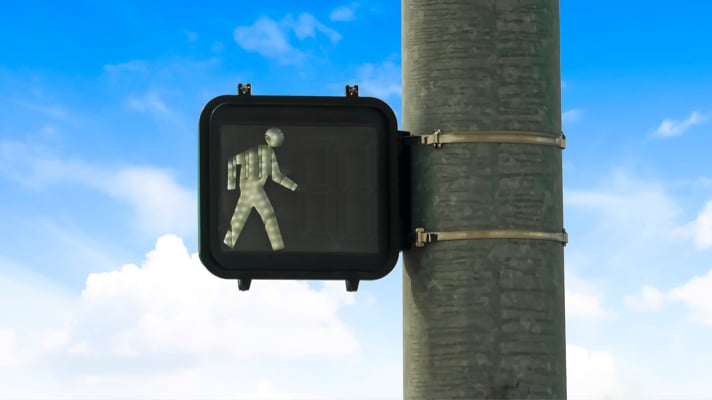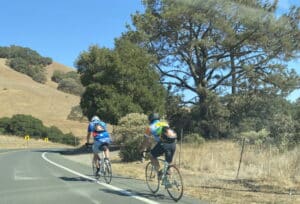Written By: Chris Dolan
California, known for its bustling cities, scenic landscapes, and diverse communities, is also a hotspot for pedestrian activity. With millions of people walking daily in cities like Los Angeles, San Francisco, and San Diego, the state faces a persistent challenge: pedestrian accidents. These incidents are a growing public safety concern, resulting in severe injuries, loss of life, and significant social and economic costs.
The Scope of the Problem
California consistently ranks among the states with the highest number of pedestrian fatalities. According to data from the National Highway Traffic Safety Administration (NHTSA), thousands of pedestrians are injured, and hundreds lose their lives annually on California’s roads. Urban areas see the majority of these accidents, often at intersections, crosswalks, and busy streets.
Factors such as high population density, heavy traffic, and reliance on walking and public transportation contribute to the elevated risk. Additionally, pedestrian accidents disproportionately affect vulnerable groups, including children, the elderly, and low-income individuals who rely more heavily on walking as a primary mode of transportation.
Common Causes of Pedestrian Accidents
- Driver Negligence: The most significant contributor to pedestrian accidents is distracted driving. Mobile phone use, eating, or adjusting in-car technology can divert drivers’ attention, leading to collisions. Speeding and failing to yield at crosswalks are other critical issues.
- Poor Infrastructure: California’s urban sprawl has created environments where pedestrian safety often takes a backseat to vehicular traffic. Many areas lack adequate crosswalks, pedestrian signals, and well-maintained sidewalks, leaving pedestrians vulnerable.
- Driving Under the Influence: Alcohol and drug impairment, whether by drivers or pedestrians, plays a significant role in accidents. Impaired judgment and delayed reaction times increase the risk of collisions.
- Weather and Visibility: While California boasts a sunny climate, nighttime accidents are disproportionately high. Poor lighting and reduced visibility make it difficult for drivers to see pedestrians.
The Impact of Pedestrian Accidents
Pedestrian accidents can have devastating consequences for individuals, families, and communities. Survivors often face life-altering injuries, including fractures, spinal cord damage, and traumatic brain injuries. The emotional toll on victims and their families is compounded by medical bills, lost wages, and reduced quality of life.
Efforts to Reduce Pedestrian Accidents
California has implemented various measures to improve pedestrian safety. Urban planning initiatives now emphasize “complete streets” designed for all users, including pedestrians, cyclists, and motorists. Features such as wider sidewalks, pedestrian islands, and better lighting are becoming more common in cities across the state.
Law enforcement agencies are also stepping up efforts to curb dangerous behaviors. Programs targeting distracted and impaired driving have shown promise in reducing accident rates. Educational campaigns, such as public service announcements and community workshops, aim to raise awareness among both drivers and pedestrians about safe practices.
In addition, California’s Vision Zero initiatives—adopted by cities like Los Angeles and San Francisco—set ambitious goals to eliminate traffic-related fatalities. These programs rely on data-driven strategies to identify high-risk areas and implement targeted interventions.
What Can Pedestrians and Drivers Do?
Pedestrians and drivers alike have a role to play in preventing accidents. Pedestrians should use crosswalks, obey traffic signals, and stay alert, especially in high-traffic areas. Wearing bright clothing or reflective gear at night can enhance visibility.
Drivers must remain vigilant, particularly in pedestrian-heavy zones. Adhering to speed limits, avoiding distractions, and yielding at crosswalks are essential practices. Additionally, avoiding alcohol and drug use while driving can save lives.
Conclusion
Pedestrian accidents in California represent a complex challenge requiring collective action. By addressing underlying causes, improving infrastructure, and fostering responsible behavior among road users, the state can make significant strides toward safer streets. The ultimate goal is to create a transportation ecosystem where pedestrians feel secure and lives are no longer needlessly lost.
Christopher B. Dolan is the owner of the Dolan Law Firm. We serve clients from the San Francisco Bay Area and California from our San Francisco, Oakland, Redondo Beach, and Los Angeles offices. Please email any questions and topics for future articles to help@dolanlawfirm.com. Each situation is different, and this column does not constitute legal advice. We recommend consulting with an experienced trial attorney to understand your rights fully.










